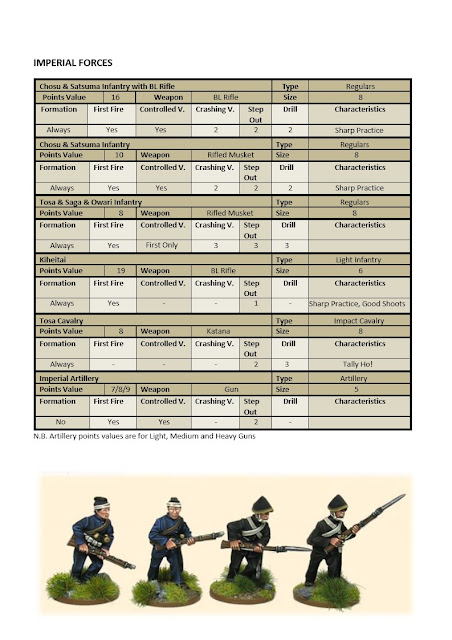he Boshin War was a civil war in Japan which was fought from 1868 to 1869 between forces loyal to the ruling Tokugawa Shogunate and to those loyal to Emperor Meiji. The influence of the Western imperial powers and merchants on Japan following the US Navy's opening of Japan to foreign trade in the 1854 Treaty of Peace and Amity resulted in a xenophobic backlash from powerful feudal lords (daimyo) and young samurai, and, in 1863, Emperor Komei signed the Order to Expel the Barbarians, leading to the nativist Sonno joi movement assassinating several Western merchants and advisors who were associated with the pro-Western Shogunate. While the Western powers responded with the Bombardment of Kagoshima and other naval campaigns against Japan, the Shogunate's heavy-handed response to the increasing power of the rebellious, pro-Imperial daimyos led to the pro-Imperial faction becoming closer to thTe foreign powers and modernizing its armies with the help of Britain; meanwhile, the Shogunate received advisory support from Britain's colonial rival, France. The sporadic clashes between the Imperial and Shogunate clans ultimately led to Shogun Tokugawa Yoshinobu's resignation in 1867 as a compromise between the factions; Emperor Meiji would be restored to power, while the Tokugawa clan would retain its privileges. However, a faction of pro-Imperial clans led by the Satsuma Domain and Choshu Domain refused to abide by this treaty, fearing that the Tokugawa would continue to dominate the Emperor, and they seized Kyoto on 3 January 1868. This resulted in the outbreak of a nationwide civil war between the Imperial and Shogunate forces which ultimately resulted in the Imperial faction overthrowing the Shogunate and crushing the last pro-Shogunate resistance in 1869 after crushing the Republic of Ezo. The Boshin War resulted in the end of the Shogunate era, the start of the Meiji Restoration era of the new Empire of Japan, and the start of Japan's rapid modernization into a Westernized superpower.
History
Sporadic conflict between the ruling Tokugawa Shogunate and reformist elements intent on restoring the emperor to power had dragged on for years. By September 1867, armies loyal to the bakufu (the Tokugawa's central administration) were hard pressed by reformist forces. To avoid civil war, the Tosa Domain proposed a compromise whereby the Shogun Tokugawa Yoshinobu would step down, but retain his privileges in a new parliament responsible to the emperor. Yoshinobu, seeing a chance to avert war while keeping de facto control, promptly resigned. Concerned that the Tokugawa would dominate the new parliament, the heads of the rebellious clans, Saigo Takamori of the Satsuma Domain and Kido Koin of the Choshu Domain, informed four other clans - the Owari, Echizen, Tosa Domain, and Hiroshima Domain - of their intention to seize the palace in Kyoto. Saigo's troops took the palace on 3 January 1868, and responsibility for the country's government reverted immediately to Emperor Meiji. Yoshinobu attacked Kyoto but, despite outnumbering the Satsuma and Choshu armies and support from French military advisers, his forces were routed in the first battle near Toba and fled to Edo (Tokyo).
During the weeks that followed, an ever-growing Imperial army advanced eastward, securing oaths of loyalty from local daimyo as they went. Faced with such opposition, Yoshinobu surrendered before a shot was fired. The seat of government was moved to Edo (now renamed Tokyo) and the Meiji era began. The Aizu Domain still resisted, however. Despite the mismatch between the Imperial Japanese Army's western-made arsenal and the Aizu's Japanese blades, it took a month of fighting to suppress them, ending with the mass suicide of the Aizu's elite warriors. The final resistance was ended in May 1869 when the self-declared Republic of Ezo, set up on Hokkaido by a former bakufu official, was crushed by Meiji forces.






No comments:
Post a Comment